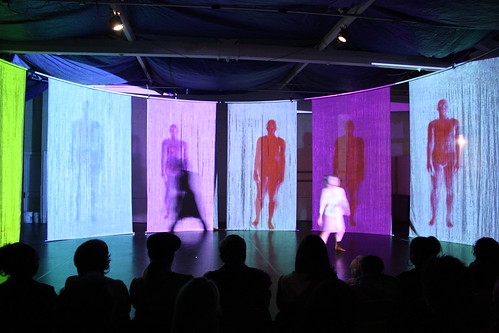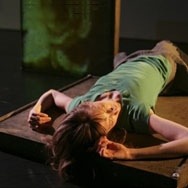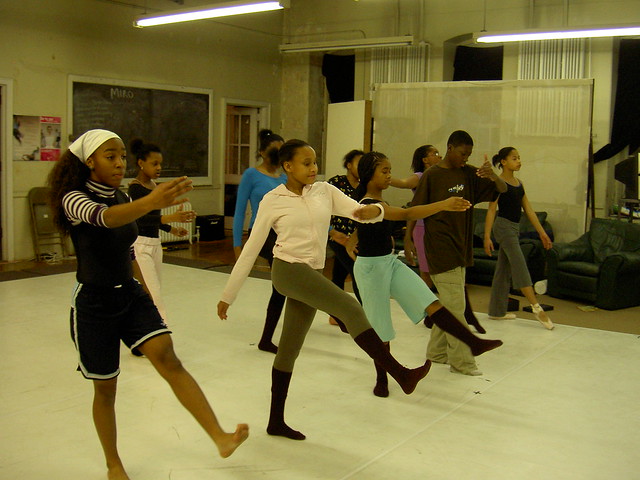Supporting creativity Pt. 3
When students begin to take ownership of creativity, they change. Our students began finding ways to spend more time in the studio. They talked about how they were creative, what they struggled with. Girls talked about bodies. Thin. Tall. Big. Fat. Amanda took such great care of them through this. She saw each dancer–always called them “dancers” never kids or students–as an individual filled with beauty and movement. They came to see that as well.
They started to concern themselves with their performances. So they started concerning themselves with each other. They took care of each other and developed new responsibilities. New senses of self.
Their first performance as part of the company was scheduled for the week of the school’s Spring Concert. That meant that the stage was up. In the big venue. With lots of seats–and lots of people. Having performed on that stage many times I can tell you that it is a big space, it will swallow you whole. It demands a certain performer. Particular confidence. Bravado.
When the students took the stage, they were present. They took command. Tunnel vision. They had that audience.

The piece, according to the MiRo process, was a parallel process that the company used as they developed work. Students explored ideas, researched, completed movement exercise and exploration–the same ones that the company members completed. They wrote notes on the chalkboards of the studio. They wore their socks floppy. To say it was parallel process is misleading. They were members of the company and they prepared as such.
The work of the students was pervasive. It seeped into the work of the company, and why wouldn’t it? When Pitch Black had its premiere at Altria with outrageous score by JakobTV for saxophone quartet and boombox, the students were in the audience and, if you looked, they were on stage as well. On panels. On stage. On bodies. Projected, being thrown, from 100 feet away at the rear of the room. Our front row special guests–on a late night in Manhattan after hustling down the glowing streets of Times Square–watching MiRo perform while video projections bent, stretched, waved and laughed–the same students looking back at them from panels on stage.
They were there. We were there. It was moving. It was tragic.
Why had it taken so long? Aside from that, it was joyous. We were alive.
Ms. Amanda, Mr. Tobin? When’s the next rehearsal?
Click here to support the inspiration of students in Philadelphia

 area that even gets onto the schedule. How could we make this work? Another challenge is that the certification process for K12 dance is essentially a technical certification–categorized with shop classes and the like. Earning the certification is one thing, maintaining it is nearly impossible. For this reason, many dancers and dance educators do not even bother. As an independent school, this was no real concern but this meant, from a practical standpoint, that there is no significant pool of dance educators to draw from in the same way that you may be able to tap into student teachers or practicum students in other content areas.
area that even gets onto the schedule. How could we make this work? Another challenge is that the certification process for K12 dance is essentially a technical certification–categorized with shop classes and the like. Earning the certification is one thing, maintaining it is nearly impossible. For this reason, many dancers and dance educators do not even bother. As an independent school, this was no real concern but this meant, from a practical standpoint, that there is no significant pool of dance educators to draw from in the same way that you may be able to tap into student teachers or practicum students in other content areas.